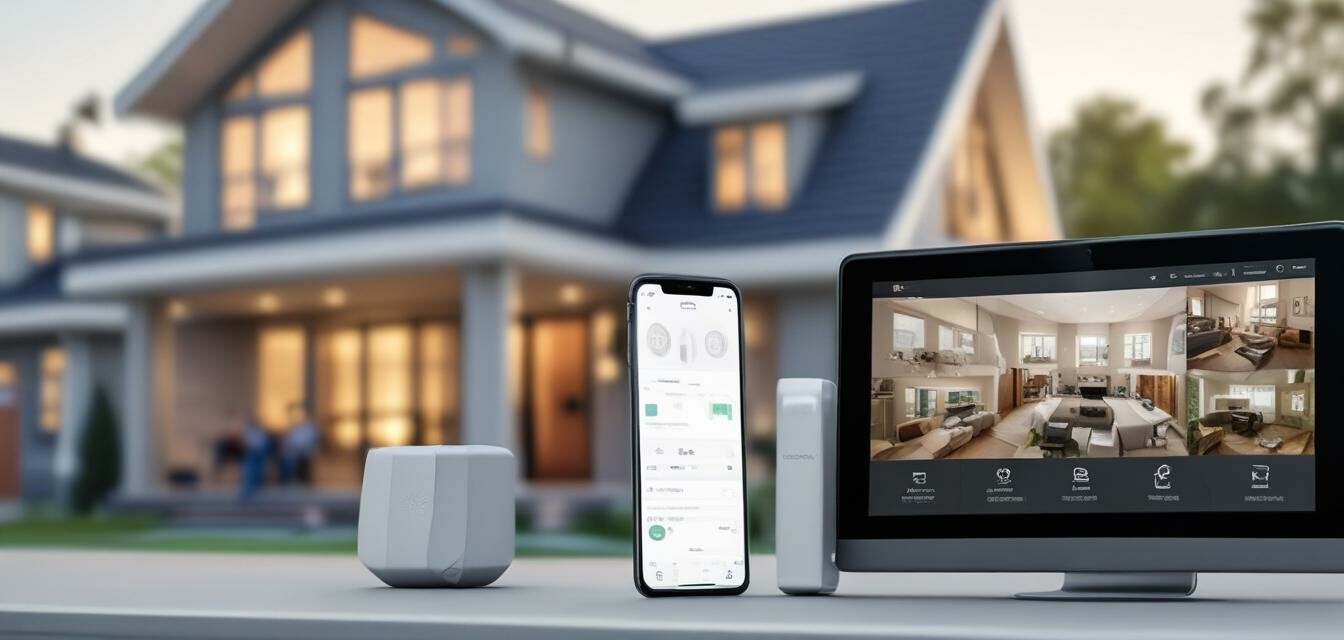
Managing Smart Security Alerts: Staying Informed
Key Takeaways
- Customize alert settings to reduce unnecessary notifications.
- Understand the different types of alerts your devices can send.
- Utilize mobile apps to manage alerts effectively.
- Combine multiple devices for a comprehensive security strategy.
- Regularly review and adjust alert settings to adapt to changing needs.
In today's world, smart security systems play a crucial role in keeping our homes safe. However, the very tools designed to protect us also come with the potential for alert fatigue—a situation where too many notifications can lead to desensitization. This article provides practical guidance on managing and customizing security alerts, ensuring you stay informed without becoming overwhelmed.
Understanding Smart Security Alerts
Smart security devices can send various alerts depending on their functionality. Understanding these alerts is key to managing them more effectively. Here’s a breakdown of common alerts:
| Type of Alert | Description |
|---|---|
| Motion Detected | Notifies you when motion is detected by cameras or sensors. |
| Door Opened | Alerts you when a door is opened, which is helpful for monitoring entry points. |
| Smart Camera Notifications | Informs you about unusual activity captured by your smart cameras. |
| Alarm Triggered | Signals that an alarm system has been activated, indicating a potential threat. |
Customizing Alert Settings
Managing alert fatigue begins with customizing your alert settings. Here are some tips:
- Prioritize alerts: Identify which alerts are most important for your safety, such as alarm triggers and motion detections. You can adjust settings to ensure high-priority notifications are more prominent.
- Set schedules: If your devices allow it, disable non-essential alerts during certain hours when you’re normally home or in situations where alerts may be less critical.
- Adjust sensitivity: For motion sensors, consider adjusting the sensitivity to reduce false alarms. This can be particularly useful in busy areas with lots of activity.
- Utilize modes: Many smart security systems offer modes (e.g., Home, Away, Night). Make sure to set the appropriate mode for your current situation, as it can automatically adjust alert settings.
Utilizing Mobile Apps for Management
Most smart devices come with mobile apps that allow for effective management of alerts. Here’s how to make the most of them:
- Download the app: Ensure you have the latest version of the app that corresponds to your security devices.
- Familiarize yourself with the features: Learn what settings you can adjust within the app, including notification preferences.
- Group notifications: Some apps offer features that group similar notifications together to reduce clutter.
- Use push notifications wisely: Set push notifications for urgent alerts while muting or bundling less critical alerts into daily summaries.
Combining Devices for Better Security Management
To enhance your home security setup, integrating various devices can ensure you receive meaningful alerts:
- Integrate motion sensors with cameras: A motion sensor can trigger a camera to start recording footage, giving you a clear picture of any activity.
- Use smart locks along with cameras: When a smart lock is engaged, it can notify cameras to begin actively monitoring the entrance.
- Create automated routines: Set your devices to work together, such as turning on lights when motion is detected at night.
Regular Review of Alert Settings
As your lifestyle and environment change, so should your alert settings. Here are some practices to help:
- Set a reminder to review your alert settings quarterly.
- Assess the effectiveness of the alerts you're receiving—are they helping you feel safer?
- Make adjustments based on any changes to your daily routine or house dynamics.
Tips for Beginners
- Start with the most critical alerts first, such as intrusion alarms.
- Follow manufacturer guidelines for optimal setup of your devices.
- Don’t hesitate to reach out to customer support for help with device configurations.
Pros
- Enhanced peace of mind through timely alerts.
- Ability to quickly respond to genuine threats.
- Customizing alerts can help reduce unnecessary notifications.
Cons
- Alert fatigue can lead to ignoring genuine threats.
- Complex setups may require technical support.
- Misconfigured devices can cause unnecessary alerts.
Conclusion
Managing smart security alerts is essential for effectively protecting your home without becoming overwhelmed. By customizing alert settings, utilizing mobile apps, combining devices, and regularly reviewing your settings, you can stay informed and act swiftly against real threats. Implement these practices today to enhance your smart home security system.
For more insights on enhancing your home security, check out our Tips & Best Practices section or learn about Home Security Systems.
